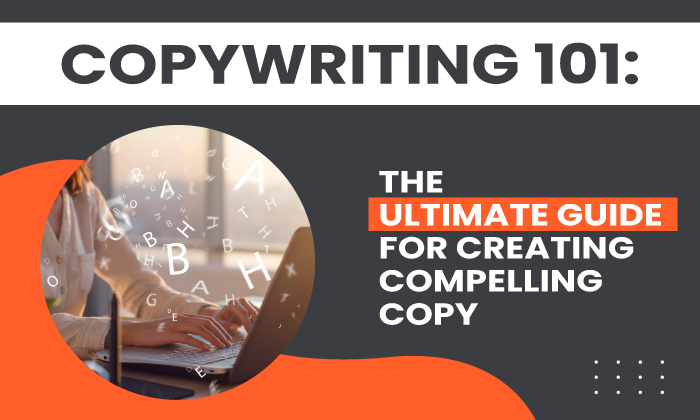
Not quite sure what makes a good copywriter?
This isn’t a huge surprise, since there’s a lot of confusion about copywriting.
It’s often compared to content writing, and some use the terms interchangeably. That’s not entirely accurate, though. Just what is copywriting, and what makes it different from other types of content creation?
Here’s a quick explanation.
Copywriting is very goal-driven. The writer of the ad or other marketing copy wants the reader to take a particular action. Copywriting can refer to call-to-actions (CTAs), email copy, social media ads, and anything else that encourages users to purchase or convert.
There’s no doubt about it. The words you use in your sales copy can be hugely impactful. Just take this example from the web design and SEO agency WiseU. They tested four different CTAs:
- Free estimate
- Free quote
- Get a Quote
- Get a Price
Perhaps not surprisingly the ‘Free Quote’ CTA won. After all, most of us can’t resist the word ‘free,’ and ‘quote’ gives the feeling of something concrete, rather than just an estimate.
It was just a subtle change from the original CTA of ‘Get a Quote’ but it made a small but measurable difference to click-throughs.
While we can’t guarantee you this level of results, in this guide, I detail how to write copy that drives sales and pleases your customers. Good results often follow.
What Is Copywriting?
As explained in the intro, the goal of copywriting is to get users to take a specific action. For example, you might want the reader to sign up for your newsletter, click to find out more about a product, or move them along a sales funnel. Ideally, a brand’s copy drives sales and conversions while also creating meaningful experiences for its target audience.
Copywriting is precise, effective, and requires a lot of creative problem-solving. Components such as features, benefits, and price all combine to persuade a consumer to convert. Your copy is the way you communicate these aspects and your value to your potential customers.
How Does Copywriting Differ from Content Marketing?
One of the most common questions people have about copywriting is how it differs from content marketing.
Just like copywriters, content marketers are vying to get users’ attention in a brief amount of time.
According to one survey, users spend an average of only two minutes on a blog post before leaving. Copywriters also have just moments to capture a user’s attention.
However, the aims of copywriting and content marketing copy are different.
Content marketing focuses on indirect sales goals, like educating, amusing, or building brand awareness. Examples of content marketing are things like blog posts, white papers, e-books, and webinars.
The main aim of copywriting is to get readers of the content to take a certain action, and you usually see it in ads, CTAs, and product descriptions.
Let’s take my blog as an example.
The overall idea of the blog is to inform you about copywriting, but within that, there are pieces of copy with distinct objectives.
For instance, when we look at certain features like the headline, calls to action, and “About Neil Patel” section in the sidebar, they each have much more specific purposes: I’ve optimized every segment to get you to take a certain action.
Let me break it down for you.
I’ve designed the headline to make you click the link from your search results and start reading.
Next, the call to action (CTA) in the top sidebar encourages you to use my SEO tool Ubersuggest.
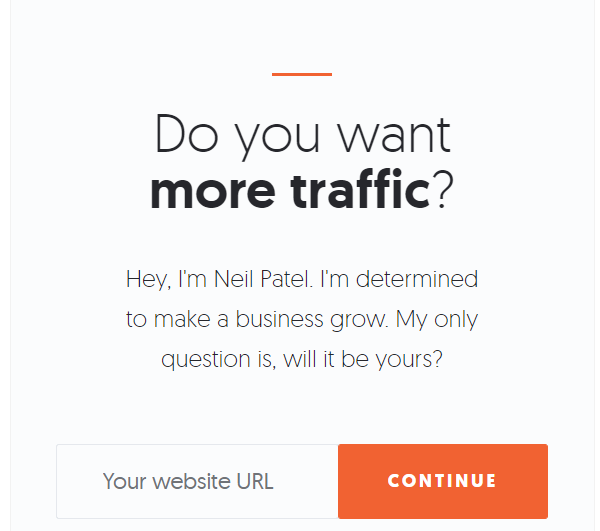
Then, I use the copy in the top banner ad to drive users to my agency.

These are all examples of copywriting within an example of content writing.
Why Is Copywriting Important?
Quality copy is critical for making sales.
Just consider this: women are 81 percent less likely to buy a product if the advertisement has spelling or grammar errors. 77 percent of men feel the same way.
However, great copywriting isn’t just about perfect grammar and diligent proofreading.
Good copy should also:
- inform
- inspire
- persuade people to take action
- develop your brand voice
- get sales
Those are some big goals to achieve, but top copywriters can accomplish them, even in the shortest of texts.
Types of Copywriting
There are many different examples of copywriting. Even on this page, you can see different types of copywriting, and each has an individual purpose.
When learning how to copywrite, you need to know about these different forms of copy.
Let’s look at some of the types below.
Brand Copywriting
70 percent of respondents in one survey said that brands should boost positivity and share positive stories. Brand copywriting is about finding out what your audience wants and presenting the right information in the right voice.
When you tell people you work in marketing, they typically imagine commercials, billboards, and jingles for brands like Pepsi, Burger King, or Netflix.
However, brand copywriters go beyond the typical features and aim to create strong emotional responses. Creative copywriting is less about proving a brand is better than the competition and more about creating a memorable experience.

Social Media Copywriting
As a brand, your goal when crafting copy for social media is to engage audiences through posts and ads.
The challenge with this style is adapting your brand messaging into various unique formats. For example, the copy you write for a post on Facebook shouldn’t be identical to your TikTok or Instagram posts.
Social media copy is still action-focused, though. On Instagram alone, 50 percent of people have visited a website to buy a product just from seeing it in Stories. However, this won’t happen unless you can persuade people to take action with this medium.
This is how you do social media copywriting:
- Use strong verbs and active language to help engagement
- Keep it brief. That’s what social media is all about
- Write in a friendly, conversational tone. Use short sentences and try not to sound too formal or stuffy
- Make your headlines eye-catching
- Add hashtags
- Mix it up. Don’t just try and sell to people. Engage, entertain, educate, and interact with your followers to build relationships.
- Create spoiler content that gives away details of new product launches etc. Just be aware that not everyone likes this type of content.
- Finish with a strong CTA so your customer knows what you want them to do next.
- Be helpful and sound human
For example, if you look at Trello’s Twitter account, you can see it’s packed full of product demos, GIFs, quizzes, and helpful content, which makes it seem more personable and not just a brand:

SEO Copywriting
SEO is all about getting your content to rank highly on the search engine result pages (SERPs).
For years now, SEO has been the go-to method to get targeted traffic to your product, and it’s a practice that remains strong. In fact, recent research shows that 69 percent of marketers invested in SEO in 2021, growing from 64 percent the previous year.
To rank highly, your content must deliver genuine value to users while mixing a healthy number of keywords and phrases. Essentially, you’re breathing life into copy that needs to meet certain keyword criteria.
Again, getting content to rank well in the search engines is an art, but it’s one that businesses are investing big money in. 71 percent of marketers report that their main business’ tactic for SEO is capturing strategic keywords.
Here are a few tips for SEO in your copywriting:
- Use keywords in your title and throughout your article, while avoiding keyword stuffing.
- Make sure your article is well-written and informative. The better it is, the more likely people are to share it.
- Include links to other related articles on your site. This helps improve your site’s ranking and increase traffic.
- Add images and videos whenever possible. They not only make your content more engaging but using media also helps with SEO.
- Optimize your content for both readability and search engines.
- Write catchy headlines that grab attention.
- Use strong call-to-actions to encourage, so people know what to do next.
Insight Copywriting
At its core, insight copywriting is about establishing your brand as an industry authority. As a copywriter, you achieve this by producing high-value educational content.
Some audiences just want simple, detailed solutions to their key pain points. For brands with a more experienced audience, thought leadership can be particularly valuable.
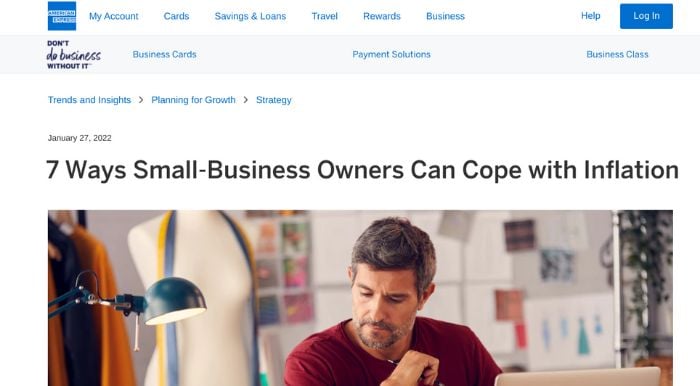
54 percent of decision-makers say they spend at least one hour a week reading thought leadership, so it’s certainly a way to reach people who are likely to take action.
You could present your thought leadership content in multiple ways, such as stories, expert interviews, blogs, or a magazine.
For example, cloud computing company Nutanix uses its online magazine ‘The Forecast’ to take a broader look at cloud applications and their advantages. It also features expert content, videos, and podcast links, further cementing its expertise in the field.

Email Copywriting
Writing a compelling email is a unique challenge, specifically because its presentation is so unusual. Nail your copy, though, and it can have a big impact: the average ROI for email marketing is $36 per $1 spent.
To be successful with email copywriting, follow these tips:
- write engaging email headlines that readers can’t ignore
- keep copy clear but ensure it still offers value
- create strong CTAs to get readers to take action
- ask for a small commitment that doesn’t alienate your audience
Balancing these goals is tricky, but learning how to copywrite helps you craft the perfect message.
Tools for Copywriters
Who’s better at copywriting, humans or robots?
We tend to think of writing as a uniquely human thing, but the truth is, modern technology is a huge help. You might not want to completely rely on artificial intelligence (AI) for your copywriting just yet. However, the right tools can make a significant difference to the performance of your copy.
If you speak to marketers, 43 percent of them believe that more than half of all their marketing tasks will be automated in the next five years. Elements of copywriting certainly fit into that projection.
How can you get started using AI to boost your campaigns? Below are some of the tools you can consider to make your copywriting more efficient, optimize your results, and hit the ground running.
1. Anyword
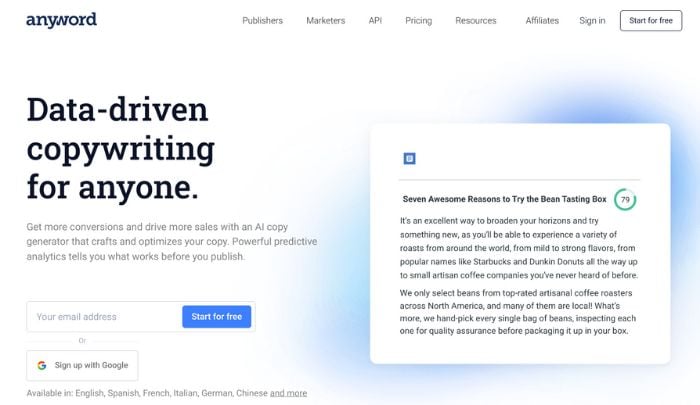
Even the most experienced copywriters have to play the guessing game on whether their copy performs. However, AI may have the answer to that.
Copy backed by data is a great way to provide value and predictive analytics to your marketing decisions. It’s becoming increasingly common for copywriters to leverage the power of data to craft and promote smarter copy. A great example is Anyword: a data-driven copywriting platform that uses predictive analytics to create and optimize marketing copy for various channels.
Anyword analyzes billions of data points to provide you with insights on your copy. This helps you pick the right words for the right audience—with little to no guesswork.
Sounds pretty cool, right?
The insights provided by the analytics are incredibly useful. They’ve been found to increase conversions by up to 30 percent, while businesses like Ted Baker saw a whopping 946 percent ROAS (return on ad spend).
It can be tricky to figure out how to best incorporate data into your content decisions, but Anyword’s AI-based language models make it a natural part of the writing process. Rather than spending your time pulling data from many different sources, you get instant insights as you craft your copy, which is extremely invaluable.
Key Benefits
- Predictive performance score: Get an immediate snapshot of how well your copy is likely to perform.
- Custom keywords: Include relevant keywords you want the AI to use.
- Content identification: Get suggestions for the most effective content for each revenue stream.
- Different copywriting types: Anyword can help you create optimized content for any copy type.
Pricing
- Free: Up to 1,000 words per month.
- Basic: $16 per month for up to 15,000 words/credits.
- Data-driven: $83 per month for up to 30,000 words/credits (Two months free for annual billing).
2. Grammarly
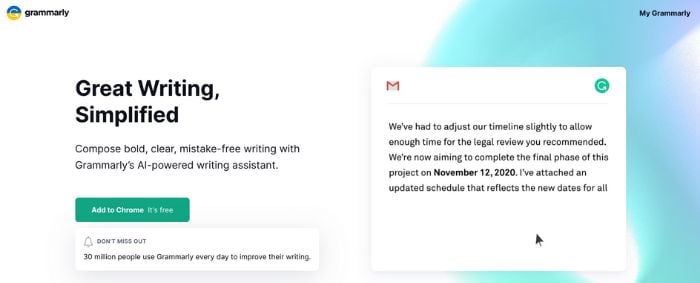
Simple spelling and grammar mistakes can ruin great copy.
That’s where Grammarly, a tool used by 30 million people worldwide, comes in.
The easiest way to avoid errors is with Grammarly’s free online writing tool. It analyzes your text as you write, pointing out spelling and grammar mistakes.
It’s also got a useful feature that tells you what your tone sounds like, so you can tweak your message to appeal to specific audiences.
You still need to read through your copy yourself, but Grammarly is the perfect way to screen for many writing mistakes.
Key Benefits
- Effortless spelling and grammar: High-level spelling and grammar recommendations as you write.
- Everything you need from the free plan: The free version is more than powerful enough for most people.
- Suggestions for tone and style guides: Get an immediate summary of the tone your copy uses and access style guides.
- Plugs into apps: Extensions are available for all the software you use to write (Chrome, Google Docs, social media, Outlook, and more).
Pricing
- Free: No cost for the limited but still highly useful version
- Premium: From $12 per month for more specific suggestions and increased capabilities
- Business: From $25 per month
3. Wordtune

Refining your copy is time-consuming. Wouldn’t it be nice if you could type the first thing that comes to your head and get suggestions on how to make it better?
That’s exactly what Wordtune gives you.
Type up to 280 characters, and the software shows you recommended rewrites to inspire your creativity. With the premium version, you can even adjust the tone, shorten your copy, or make it longer.
You’re still in charge of the ideas, but Wordtune can make them better.
Key Benefits
- Instant rewrite suggestions: Write up to 280 characters and get instant rewrite suggestions.
- Shorten or expand suggestions (Paid): Get suggestions for shortening/expanding your copy with the click of a button.
- Switch between formal and casual tones (Paid): Get rewrite suggestions based on a formal or casual tone.
- Extensions for apps: Plug-ins are available for all the software you use to write (Chrome, Google Docs, social media, Outlook, the list goes on).
Pricing
- Free: 10 rewrites per day
- Premium: $9.99 per month for unlimited rewrites
- Premium for teams: Inquire on the website
How to Copywrite: Copywriting Strategies
We’ve answered the question ‘what is copywriting?’, and highlighted some tools available to take your content to the next level, but what about strategies?
Even with the best copywriting software in the world, you still need the human element. What are some steps you can use to ensure your words inspire people to take action?
1. Before You Start, Get to Know Your Audience
We hear a lot about privacy concerns, but 65 percent of consumers are willing to share their data to get a personalized experience. Even in a data-conscious world, we don’t mind sharing our personal information if it means getting information, recommendations, and offers tailored to us.
The above survey shows how important it is to understand your target audience: when you know exactly who you’re writing for, you can adapt your approach to meet their preferences, wants, and needs.
That all seems simple enough, but how do you go about understanding your audience? By creating a buyer persona, or a fictional representation of your ideal customer. This outlines who your audience is, including demographics, job title, location, age, and income level.

Don’t just wing this. Dig into your current customer data and look for customers with a high lifetime value or retention rate.
Once you have your buyer persona outlined, dig a little deeper by asking yourself questions like:
- Who are you currently selling to?
- Who would you like to sell to?
- What do your current customers love about your offering?
- What struggles do your customers face, and how do you help them solve those problems?
Use this information to guide you as you begin writing your copy.
Remember that most copywriting appeals directly to your target audience, so use language that resonates with the individual. Include them in the process, by referring to “you” and “we.”
For instance, consider the difference between these two sentences:
- AI tools can help increase conversion rates.
- AI tools can help you increase your conversion rates for your copy.
You’ve turned it into a more personal suggestion just by changing the language slightly.
For help creating a customer persona, here’s a link to a free template.
2. Use the Right Tone
Writing well is about more than choosing the right words. Tone, or the attitude you use, gives your writing far more context than your word choice. It tells prospective customers whether you are fun-loving, serious, quirky, or highly professional.
For instance, consider these two copywriting examples for a fictional company that sells sales software:
“Understand your customers better using state-of-the-art software designed to take your business from zero to hero.”
It’s professional and shares the tool’s major benefits (it’s advanced and helps you understand your customers better). It also uses a slightly quirky tone—the phrase “zero to hero” shows they don’t take themselves too seriously.
Now, consider this:
“Gain a deeper understanding of your customers using our AI-powered sales software. SellingPlus software helps streamline your sales funnel and drive revenue.”
This example has the same general information as the first, but the tone is more professional and digs a little deeper. They use AI to power their software and help improve the sales process. The tone is more professional and is likely better suited to a C-suite executive or an enterprise company.
While the information is essentially the same, the tone changes according to the audience. It helps customers feel like they are in the right place and that this software is ideal for their business.
Here’s another example of the effect tone can have:

The tone makes the copy unique; it makes you listen. There’s nothing fancy about the words, but the way they’re used draws you in.
If getting the right tone is a struggle, I’ve got great news. Grammarly has a built-in tool that helps you adjust your writing tone to fit your audience.
For example, if you choose a “general” audience, the tool will highlight complex sentences that might be hard for a general audience to understand.
3. Stress Your UVP (Unique Value Proposition)
The internet and the rise of globalization have given us more options than ever.
Online sales keep growing, with a 14.2 percent increase in the U.S. alone. More and more people are buying and selling online.
For example, if you want a new mattress, you don’t have to choose from the two local furniture stores. Now you can order a mattress from anywhere in the world and have it delivered to your door in days.
Having more options is a good thing. For businesses, however, an increase in consumer options means there are more competitors, which is why your copy needs to focus on what sets you apart (your UVP).
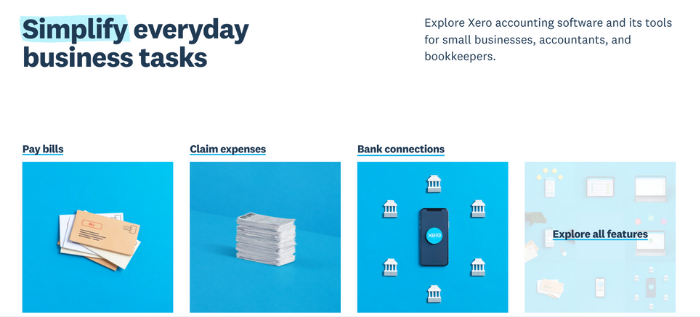
Xero does an excellent job at highlighting its software’s value proposition. It breaks down exactly what the tool does in just four words: “simplify everyday business tasks,” and who they do it for: “small businesses, accountants, bookkeepers locally and around the world.”

Let’s be honest: Your business isn’t perfect for everyone, and it shouldn’t be!
Maybe you focus on helping small businesses handle their social media marketing or provide software that helps free-range chicken farmers track egg production.
Your UVP should be laser-focused on explaining why you are the right fit for your specific audience, not anyone and everyone.
For example, small businesses have a smaller budget and might want to focus on organic growth rather than paid social ads. Free-range egg farmers might need sensors that cover a wider area than factory farms.
Remember, you don’t have to be good at everything. Rather than focusing on all the amazing things you do, take time to settle on what sets you apart.
Then focus on that in your copy.
To get started with your UVP, there are some great free templates online.
4. Use Storytelling
An Authencity Gap Study across 300 brands and five categories highlights how important authenticity is to consumers and how much they value transparency, so you must back your stories up with real-world data and examples.
Throughout history, storytelling has been a staple for helping to achieve many different goals, and it’s an approach I use myself.
I know that blogging can build you a seven-figure business, but it’s much more powerful if I tell you the story of how I used content to build such a business. Why is that?
- it’s more entertaining
- stories are easier to remember than facts
- they help put things into context
- we like telling stories to others, so we’re more likely to pass the story on
- a good story is timeless
Take this article. We’re talking about something pretty serious, but despite this, I’m always breaking things up by introducing little stories. Notice how I didn’t use an example of a faceless business in the last section? Instead, I chose one that helps farmers track their chickens’ egg production.
I’ve tried to create a picture in your mind that shows why this egg-tracking software needs to show its value proposition and how that helps generate sales.
You don’t have to tell the entire history of your story, but you can use the basics of storytelling in virtually any form of copywriting.
What’s even better is when you can tell real-life stories that encourage action.
Case in point: Here, I’m going to show you an example from Scott’s Cheap Flights. Scott tells a story about how he chooses the flights he recommends and then shows you his checklist.
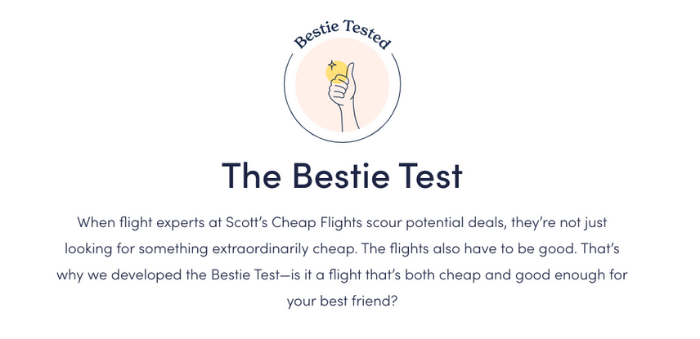
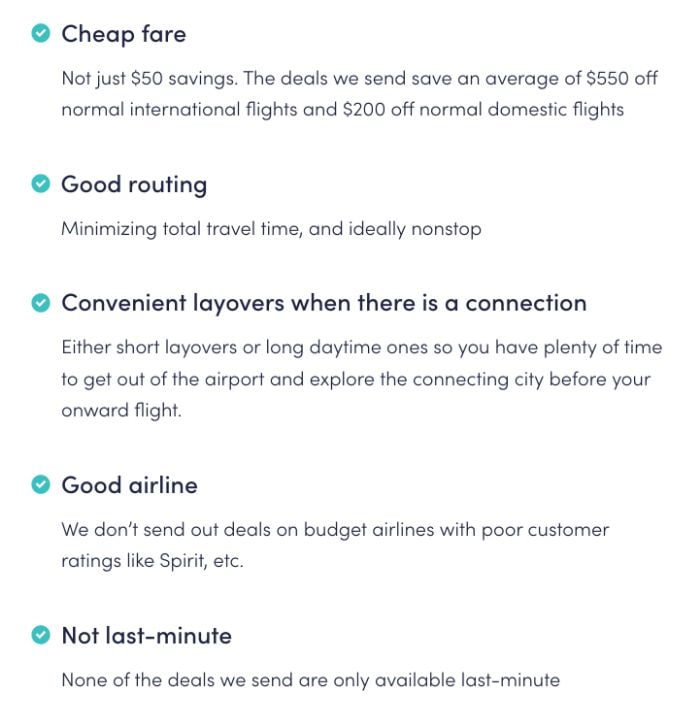
It then gives an example of a deal that would pass the Bestie test, along with one that wouldn’t:

5. Use Copywriting That Solves Pain Points
One of the reasons 70 percent of marketers use account-based marketing is because it helps businesses identify individuals’ pain points, but it’s possible to do this with a broader audience as well; it just takes good copywriting.
When you write copy, it’s tempting to focus on the positives, like how awesome your product is or how much your customers love you.
However, customers aren’t looking for a product or service because everything is sunshine and rainbows; they’re looking for a solution to a problem. Those problems are pain points, and they should be the main focus of your copy.
For example, when people consider using my keyword research tool Ubersuggest, they are looking for more traffic. That’s the problem they are trying to solve.
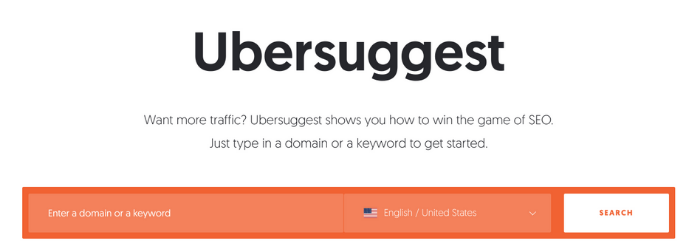
The copy on the landing page focuses directly on that problem by asking, “Want more traffic?”
We could focus on what our tool does or how it helps you research your competitors. Those are awesome features that users love. However, that’s not what our users worry about: They just want more traffic.
Customers face six main pain points:
- financial
- risk and trust
- ease and convenience
- productivity and time
- processes and journey
- communication and support
Think about what pain points your customers face and drive home how you help them solve that problem. There are lots of ways to find out about customers’ pain points, but one of the most effective is to simply ask them.
Create a survey, discover your audiences’ pain points, and craft your copy around them.
6. Leverage Social Proof
More consumers read online reviews than ever before.
77 percent of people always read reviews before choosing a business, so if your copy doesn’t use social proof, it’s missing a crucial element.
Here’s why it works: When we see that someone else has had a good experience with a product or service, we want to enjoy the same benefits.
Why is it so effective? We trust information that comes from other users, like family members or even celebrities, more than information that comes directly from brands.
Let’s say you’re looking for a new Indian restaurant. Are you more likely to trust your best friend’s recommendation or an ad you saw on Facebook? Probably your friend, right? In fact, 79 percent of consumers trust reviews as much as personal recommendations from family or friends, while on average, 46 percent of U.S. consumers felt that TV and print ads were either somewhat or very trustworthy.
Social proof can help make copywriting more powerful by increasing trust.
You can leverage social proof in copywriting by:
- Using social proof to inspire your copywriting: Reviews and customer surveys can help you understand what customers love about your product. Use social proof to determine which pain points to focus on and what benefits to highlight.
- Including social proof near copy: Add reviews and case studies to landing pages, homepages, and your website to strengthen your copy and show that other people like what you have to offer.
Consider this simple yet highly effective copywriting from ExpressVPN:
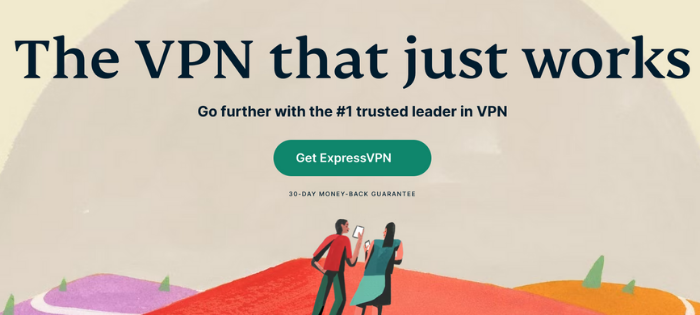
Scroll down a little further, and guess what you’ll find? You got it, social proof!
7. Use Crisp Language
Have you ever heard that the average human attention span is about 8 seconds?
This stat is often quoted, and it’s pretty clear to see why: It’s shocking.
However, the stat is a little bit misleading. In reality, human attention spans are task-dependent. When we’re browsing the internet, though, we don’t have a lot of tolerance for timewasting. We want quick access to important information and insights.
The enemy of this is fluff.
It’s easy to get long-winded when writing. You might be used to writing emails explaining decisions to your boss or crafting workflow documentation. In those situations, a few extra words won’t matter and might be helpful.
Even in a blog post, like this one, longer prose can work.
Not in copywriting. When you write copy, every single word must serve a purpose. If it doesn’t educate, stress a benefit, or build a connection, it needs to go.
Here are a few common words and phrases to ditch when writing copy:
- that
- in order to
- maybe
- very
- a little
- even
- just
- perhaps
- so
- really
- of
- like
Your copy has to be easy to read, so clearly, you need to use these words occasionally. Sometimes they’re necessary, but ask yourself whether they bring anything to the table.
Consider running your copy through the Hemingway App, which looks for overly complex sentences and phrases. Then, substitute these filler phrases with powerful words that drive action rather than taking up space.

In my pop-up, you can see every word is designed to add value. I know that people’s attention span is tiny when it comes to pop-ups, so each word counts.
Words like “just,” “maybe,” and “a little” are replaced by words like “quick,” “action plan,” and “exactly.”
8. Test Your Copywriting
Want to hear a crazy statistic?
In 2010, Barack Obama used A/B testing to raise an additional $60 million for his fundraising. Back then, these concepts were much newer, but even today, people aren’t running tests as much as they should.
Copywriting is a process, and part of the process is figuring out what resonates with your prospective customers. No matter how much research you do or how many times you poll your audience, you need to A/B test your copy.
I’m consistently surprised by what works and what doesn’t in copywriting. Sometimes leads have different problems; sometimes, the tone needs a bit of work.
In addition, tastes change over time. For example, a few years ago, telling customers you use AI might not have meant anything. Today, every brand is using it in its copy. If you were A/B testing, you would’ve gotten this income winner before the rest.
Even brands you would never expect are constantly talking about AI in their copy now, and the reason is, they’ve tested it and found it works.
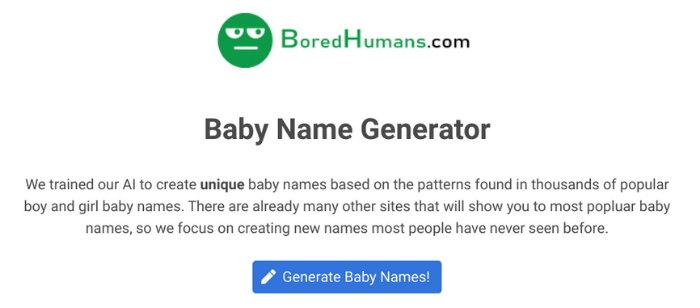
Note: This isn’t necessarily a great example of copy, but it shows how it uses AI.
However, there’s one catch—don’t test drastically different versions of your copy. Instead, test one or two element changes at most and see which drives the most conversions. Pick the most successful version, then test again and again.
Consider testing these elements:
- Point of view: “You can save” versus “Save now,” for example.
- Button copy: “Buy Now,” “Get your free account,” or “Sign up.”
- Headlines: Focus on different features or pain points.
- Formatting: Bullet points versus numbered lists, for example.
- CTAs: What drives consumers to take action? Test multiple CTAs to see what works best.
Several tools make A/B testing your copy easy, including Google Optimize and Optimizely.
Remember, A/B testing should be an ongoing process to help improve your copy over time. Don’t run one or two tests and call it good.
9. Use Engaging Facts and Stats
We all love facts and statistics. They jump off the page and immediately tell a story.
Look how many stats I’ve used in this article! That’s because they add credibility to what I’m saying.
If I tell you that A/B testing is important, why should you believe me? If I just say it without backing it up with data, you probably shouldn’t. When I tell you that companies that used A/B testing saw an X percent increase in sales, then it gives you much more reason to think, “Yes, Neil knows what he’s talking about.”
Stats are extremely important in long content like this, so just think how important they are in copy where you’ve got to encourage action in limited words. They’re like gold dust. Here’s an example, email marketing software company, Drip, highlights the fact they’ve 30,000+ marketers using their software, so it must be good, right?
Then, Drip gives specific examples, like the company that drove over $1 million in revenue by using its software. Drip also details how it helped the company achieve a 30 percent increase in its average orders.

Cold, hard stats can cut through the noise, and site visitors get the message immediately.
10. Repeat Key Information
According to experts, you’ve got to actively recall a memory 30 times for information to stick.
You probably don’t want to say the same thing over and over 30 times in your copy, but you do want to keep repeating key information. Otherwise, it’s easily passed over and won’t stand out as something important in the reader’s mind.
All of these examples are from the same homepage:
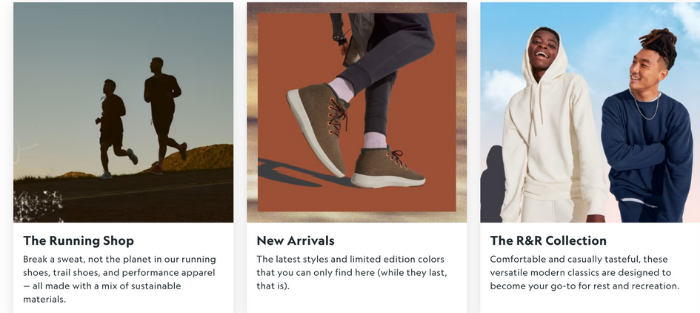


You might miss the idea that these shoes are sustainable the first time, you might miss it the second, but by the third time they mention it, you know that Allbirds’ shoes are sustainable.
As ever with keywords or themes, they’ve got to fit naturally into the text. I mentioned that fluff is the enemy of great copywriting, and that goes for putting keywords and themes in just for the sake of it.
Focus on the ideas that matter most to your target audience and repeat them naturally.
11. Ask Readers Questions in Your Copy
When we speak in real life, it’s not normally a one-sided conversation; it’s a collaboration. When you’re trying to get people to take action, you need their buy-in.
The best copywriters often ask questions. Why?
It makes the process more collaborative and encourages the reader to connect the dots. When I asked you why the top copywriters use questions, what did your brain do?
I bet it started actively filling in the blanks. We’re hardwired to find answers to questions, and this naturally causes us to connect with the copy we’re reading.

Aside from the nice play on words between hairstyle and air style, this copy naturally makes your brain want to answer the question.
The first goal of amazing copy is to engage people because otherwise, you can’t encourage action. Breaking up your copy with a question is an ideal way to achieve this.
12. Use Compelling Words in Your Copy
There are certain words in any language that elicit a psychological or emotional response. They’re commonly referred to as power words, and you see them everywhere in copywriting.
Even though we’re completely unaware of it, these words help to persuade us into taking action, and that’s exactly what copywriters want.
Think of some of the most common phrases we hear in ads:
- Get rich quick
- While supplies last
- Last chance
- Buy now, pay zero
These phrases draw on power words that are proven to trigger certain emotions, and you can use that to inspire action.
Next time you’re doing your split testing, try adding one of these power words into your copy and see what happens. Adding just a couple of these words to a pop-up has been shown to increase sign-ups by more than 400 percent.
It’s a bit like a Jedi mind trick, except, anyone can do it.

Here we see some of those compelling words in action:
- convert
- monetize
- instantly
- grow
- powerful
- optimization
It’s a short piece of copy, and yet, so many of those words pack a real punch.
FAQs
Copywriting is written text that’s used to inform and encourage people to take action. Content falls into this category because it tries to achieve these goals; however, copywriting also comes in many other forms. For example, the text in your marketing emails or the written posts you put on your social media are all copy.
A copywriter specializes in creating ad copy, web copy, and other marketing materials. They are also responsible for catchy slogans, creating attention-grabbing headlines, and writing persuasive sales copy.
You don’t need any specific qualifications to become a copywriter. What you need are strong writing skills and an ability to understand how to inspire your target audience into taking action.
Copywriters must combine lots of different skills, but the five key ingredients are high-level writing, research skills, analytical skills, good communication, and problem-solving skills.
Copywriting success is measured by how many people take your desired action. This differs depending on the type of copy you’re writing, but the important thing is to have a clear goal and an understanding of how you will measure performance against that goal.
Glassdoor estimates that the average total pay for a senior copywriter is $92,105. This closely aligns with the Bureau of Labor Statistics estimate for all writers (which copywriters fall under), which is $69,510 a year.
Copywriters must understand the wants and needs of their target audience and craft messages that appeal to them. They must also create effective calls to action. Other necessary skills include a clear understanding of common advertising and marketing concepts, strong writing skills, and the ability to think creatively and strategically.
Conclusion
Copywriting is an essential part of digital marketing.
If you can’t convince people to take action, then you can’t get clicks to your website, generate leads, or make sales.
Luckily, with the right focus, copywriting is something you can learn to do well, and these tips and tools should help. You can put this newfound skill to work for your own business, or you can get paid to do it for others. The choice is yours.
As always, though, if you need any help with your digital marketing and your copywriting, then speak to my team.
What are you going to do with your new copywriting skills?
from Neil Patel's Digital Marketing Blog https://ift.tt/ujRrZ03
via IFTTT
No comments:
Post a Comment